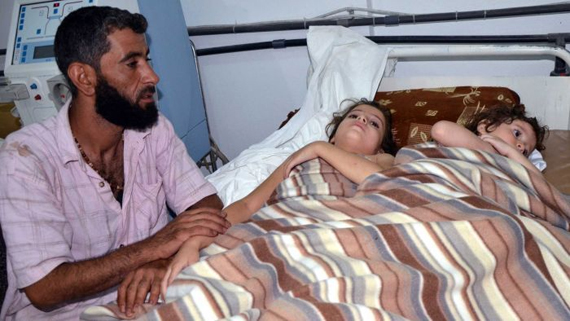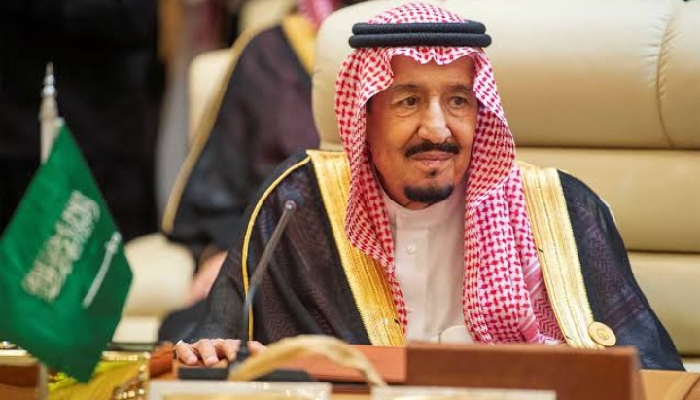
Beirut/Amman, Aug 22: Syria's opposition accused government forces of gassing hundreds of people on Wednesday by firing rockets that released deadly fumes over rebel-held Damascus suburbs, killing men, women and children as they slept.
With the dead estimated at between 500 and 1,300, what would be the world's most lethal chemical weapons attack since the 1980s prompted an emergency meeting of the UN security council in New York.
While UN Secretary general Ban Ki-moon expressed shock, immediate international action is likely to be limited, with the divisions among major powers that have crippled efforts to quell two and a half years of civil war still much in evidence.
Russia hastened to back up denials from the administration of President Bashar al-Assad by saying it looked like a rebel "provocation" to discredit him.
Britain voiced the opposite view: "I hope this will wake up some who have supported the Assad regime to realize its murderous and barbaric nature," Foreign Secretary William Hague said on a visit to Paris, London's ally against Assad.
France, Britain, the United States and others called for an immediate on-site investigation by UN chemical weapons inspectors who arrived in the Syrian capital only this week. Moscow, urging an "objective" inquiry, said the very presence of that team suggested government forces were not to blame.
Neighboring Israel's Channel 10 television quoted defence minister Moshe Yaalon as telling reporters that Syria had used chemical weapons, and not for the first time.
US President Barack Obama has made the use of chemical weapons by Assad's forces a "red line" that already in June triggered more US aid to the rebels. But previous, smaller and disputed cases of their deployment have not brought the all-out military intervention that rebel leaders have sought to break a stalemate.
If confirmed, a major gas attack could increase pressure on Obama to do more to support rebels whose links to militant Islam have helped dampen Western enthusiasm for their cause.
The security council, where Russia has vetoed previous Western efforts to impose UN penalties on Assad, began a closed-door meeting but is not expected to take decisive action, with the big powers still at loggerheads and cautiously seeking clarity over the incident.
Images, including some by freelance photographers supplied to Reuters, showed scores of bodies - some of them small children - laid on the floor of a clinic with no visible signs of injuries. Some showed people with foam around their mouths.
Reuters was not able to verify the cause of their deaths.
The United States and others said it had no independent confirmation that chemical weapons had been used. U.N. chief Ban said the head of the organization's inspection team in Damascus was already discussing the latest claims with the government.
"SLEEPING DEAD"
Opposition activists variously cited death tolls ranging from about 500 to, by one account, some 1,300 after shells and rockets fell around 3am (0000 GMT). In 1988, 3,000 to 5,000 Iraqi Kurds were gassed by Saddam Hussein's forces at Halabja.
One man who said he had retrieved victims in the suburb of Erbin told Reuters: "We would go into a house and everything was in its place. Every person was in their place. They were lying where they had been. They looked like they were asleep.
"But they were dead."
When shelling hit her town of Mouadamiya, southwest of the capital, Farah al-Shami ignored rumors on Facebook that rockets were loaded with chemical agents. She thought her district was too close to a military encampment to be affected.
"And at the same time the UN was here. It seemed impossible. But then I started to feel dizzy. I was choking and my eyes were burning," the 23-year-old told Reuters over Skype.
"I rushed to the field clinic nearby. Luckily no one in my family was hurt, but I saw entire families on the floor."
Doctors interviewed described symptoms they believe point to sarin gas, one of the agents Western powers accuse Damascus of having in an undeclared chemical weapons stockpile.
"The United States is deeply concerned by reports that hundreds of Syrian civilians have been killed in an attack by Syrian government forces, including by the use of chemical weapons," White House spokesman Josh Earnest said.
He added that "if the Syrian government has nothing to hide", it would facilitate the work of the UN inspectors.
Syrian information minister Omran Zoabi said the allegations were "illogical and fabricated". Assad's officials have said they would never use poison gas against Syrians. The United States and European allies believe Assad's forces have used small amounts of sarin before, hence the current UN visit.
Russia came to Assad's defense.
Noting the "criminal act" took place as the U.N. team got to work, a spokesman in Moscow said: "This cannot but suggest that once again we are dealing with a pre-planned provocation ... We call on all those who can influence the armed extremists to make every effort to end provocations with chemical agents."
George Sabra, one of the leading opponents of Assad, said the death toll was 1,300: "Today's crimes are ... not the first time the regime has used chemical weapons. But they constitute a turning point in the regime's operations," he said in Istanbul.
"This time it was for annihilation rather than terror."
US senator John McCain, a Republican critic of Obama's Syria policy, said on Twitter that failure to penalize previous gas attacks had emboldened Assad: "No consequence for Assad using chemical weapons & crossing red line," he said. "We shouldn't be surprised he's using them again."
An opposition monitoring group, citing figures compiled from clinics in the Damascus suburbs, put the death toll at 494 - 90 percent killed by gas, the rest by bombs and conventional arms. The rebel Syrian National Coalition said 650 people died.
Activists said rockets with chemical agents hit the Damascus suburbs of Ain Tarma, Zamalka and Jobar during a fierce pre-dawn bombardment by government forces. The Damascus Media Office said 150 bodies were counted in Hammouriya, 100 in Kfar Batna, 67 in Saqba, 61 in Douma, 76 in Mouadamiya and 40 in Erbin.
Residents of the capital said mortars later hit government-held areas in Faris Khoury Street and the Malki district, where Assad has a residence. There were no reports of injuries.
Heavy air strikes continued throughout the day against the rebel suburbs of Mouadamiya and Jobar.
SYMPTOMS
A nurse at Douma Emergency Collection facility, Bayan Baker, said: "Many of the casualties are women and children. They arrived with their pupils constricted, cold limbs and foam in their mouths. The doctors say these are typical symptoms of nerve gas victims."
Exposure to sarin gas causes pupils in the eyes to shrink to pinpoint sizes and foaming at the lips.
Extensive amateur video and photographs appeared on the Internet showing victims choking, some foaming at the mouth.
A video purportedly shot in the Kafr Batna neighborhood showed a room filled with more than 90 bodies, many of them children and a few women and elderly men. Most of the bodies appeared ashen or pale but with no visible injuries.
Other footage showed doctors treating people in makeshift clinics. One video showed the bodies of a dozen people lying on the floor of a clinic. A voiceover said they were members of a single family. In a corridor outside lay another five bodies.
Syria is one of just a handful of countries that are not parties to the international treaty that bans chemical weapons, and Western nations believe it has caches of undeclared mustard gas, sarin and VX nerve agents.
Assad's officials have said they would never use poison gas - if they had it - against Syrians. Western countries say they do not believe the rebels have access to poison gas.
The conflict grew out of pro-democracy protests in March 2011 inspired by the fall of authoritarian rulers in Tunisia and Egypt. It has turned into a sectarian bloodbath in which over 100,000 have died and has sown animosity across the region.
Assad has support at home from his minority fellow Alawites and abroad from Iran, bastion of the related Shi'ite strand of Islam. Rebels are predominantly from the Sunni majority and have backing from the West and Sunni Arab powers like Saudi Arabia.






Comments
Add new comment